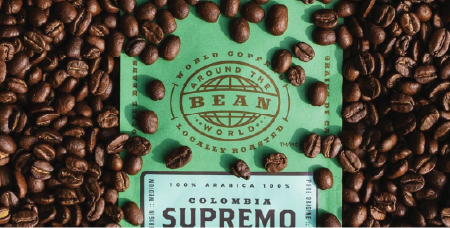While traveling to Italy every time you’re craving a good coffee might not be an option for most of us, making a café-quality espresso at home is. And we’re here to show you how.
In this blog post, we'll go over what espresso is, what gear you need to make one, and the steps to get that true Italian vibe. Because with the right knowledge (and equipment), even beginners can brew outstanding espresso.
Get ready to experience the rich flavors, strong aromas, and velvety textures of a perfectly extracted shot of espresso.

Espresso 101
Before we go into the step-by-step, we first need to define what espresso even is. This Italian classic is basically a concentrated coffee beverage brewed under high pressure. Unlike regular coffee, espresso is made using finely ground coffee beans, and it needs more specialized equipment. What you end up with is a bold, intense, and luxurious cup that sets it apart from other brewing methods.
What equipment you need
Understanding what equipment you’ll need (and how to care for it) before you embark on your espresso journey is also key. After all, it’s what will help you get that velvety texture and strong flavor.
Espresso Machine
The main piece of equipment you’ll need is, of course, an espresso machine. With three types to choose from, there’s an option for every skill and preference. A semi-automatic machine is great for beginners because you can control the extraction process and still have room to experiment.
Fully automatic machines, on the other hand, give you less freedom of choice and automate the brewing process for convenience and consistency. If you’re more into complete control over your espresso, then a manual espresso machine is perfect for you. Remember to clean your machine regularly and descale it periodically to remove any mineral deposits.
Coffee Grinder
Because you’ll be using freshly ground coffee beans, a quality burr grinder (not a regular grinder) is key for getting a consistent grind size — crucial when making espresso. You want your coffee to be super fine, almost like table salt.
This Hario Skerton Grinder is a great choice for those on a budget but still want something that’s compact, lightweight, and high quality.
Tamper and Portafilter
The last pieces of your expresso kit are a tamper and portafilter. You use a tamper to make sure your coffee grounds are evenly pressed down and the portafilter to hold those coffee grounds. Don’t skip this step, it’ll help make sure water flows evenly through the coffee.
Make sure your tamper fits comfortably in your hand, your portafilter is compatible with your espresso machine, and that you’re cleaning both after each use.
Choosing the Right Beans
The secret to exceptional espresso is to use freshly roasted whole beans. Look for beans specifically suited for espresso, like this BATW blend. It has subtle toasted caramel undertones, and it’s not too dark and not too light.
Once you’ve chosen your beans, be sure to keep them fresh by storing them in an airtight container. The Fellow Atmos Vacuum Canister is a great way to keep them away from light and moisture so the flavors are preserved for the best possible cup of espresso.
The steps to make an espresso
Now that you have all your equipment, you’ve chosen your beans, and your mouth is starting to water, let's dive into how to actually make your espresso.
Step 1 - Grinding the beans
How much you grind is critical for that perfect espresso. Aim for a fine grind, similar to table salt. This will make sure water is able to extract flavors and strength properly. Need a general guideline? Use around 7 gr of coffee per ounce of water.
Step 2 - Dosing and tamping
The next step is being consistent (and exact) about how much coffee grounds you’re brewing. Use a scale to measure the correct amount of coffee and a tamper to evenly compress it in the portafilter. A good approximation is to use 30 lbs of pressure while tamping and finish with a gentle polish using the weight of the tamper. This will give you a level, compact coffee bed great for optimal water flow while brewing.
Step 3 - Brewing technique
You’re almost done! Now it's time to put everything together and make your espresso. Preheat your espresso machine to make sure temperatures are stable through the brewing process. Place the portafilter into the machine's group head and start the extraction. Aim for a shot time of around 25-30 seconds, with the extracted volume ideally ranging from 1 to 2 ounces. Adjust your grind size, dose, or tamp pressure as needed to reach your perfect shot time and extraction yield.
Refining your espresso

Tweaking and tinkering with a few things can help you keep building towards a great espresso.
- Brew time and extraction yield - Try out different shot times to find your sweet spot in terms of flavor balance. Adjust how much volume of espresso is extracted to change strength and flavor intensity. Aim for a balanced extraction, where the flavors are well-extracted without being overly bitter or sour.
- Adjusting variables - Things like grind size, water temperature, and extraction pressure are variables that can change the flavor profile of your espresso. Too sour or under-extracted? Try using a finer grind, more water temperature, or more pressure during extraction. Too bitter or over-extracted? Adjust the variables in the opposite direction.
Savour every sip

How’s that taste? As good as the one you had in Italy? We certainly hope so! By understanding the fundamentals of espresso extraction, selecting the right beans, and mastering the brewing techniques, you can create a rich, flavorful espresso that rivals anything you might find overseas.
If your cup of joe isn’t quite where you want it yet, remember that with practice and a love for the craft, you'll be drinking café-quality drinks in no time. Enjoy the process and savor every sip!



